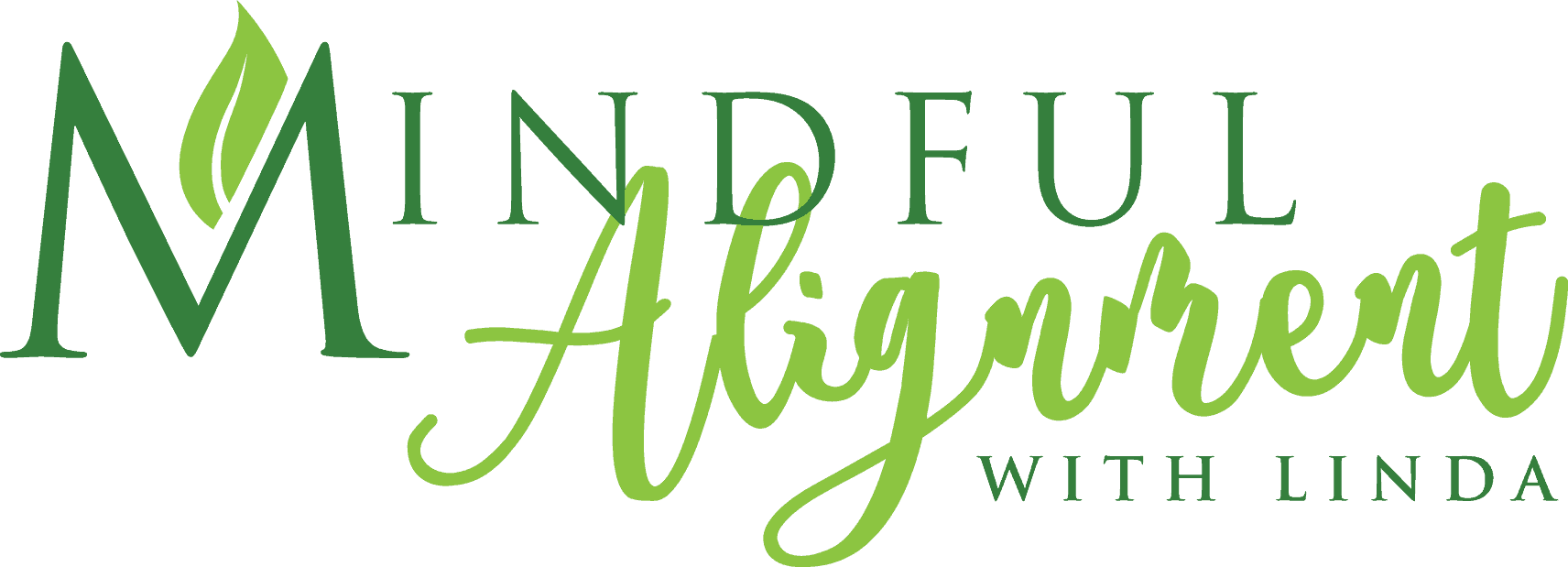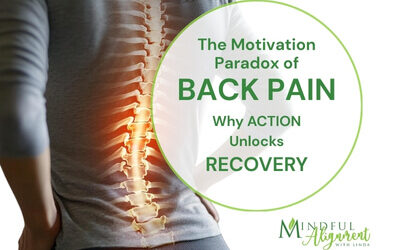Preventing Back Pain
“Why does my lower back hurt? I don’t have any apparent injuries.”
There are many possible triggers for experiencing lower backache. Following are five frequent reasons:
Reason #1: If your pelvis is tilted just slightly forward or backward.
This causes the natural curve in the spine to flatten or bend too much. When the spine is slightly out of its natural position, the muscles surrounding the spine respond with pain or tightness. The natural curve of the spine does allow us to stand upright but needs to be in the intended position for the muscles to be contented.
Reason #2: The muscles on one side of the body might be tighter.
Even a small amount of tightness on one side can cause a shift in the balance of the muscles. When one side tightens, the muscles on the other side of the body must be more flexible. Stretching out the tighter side may help re-balance the muscles.
Reason #3: Using technology draws us to look downward for significant parts of our day.
When our shoulders round forward the head also comes forward. For every inch the head is forward, the weight of the head increases by 10 lbs. putting more strain on the spine and the muscles in the back. Try taking a break from technology every hour by rolling your shoulders back, re-centering your head over your spine and do a few spinal twists. (CONSULT WITH YOUR PHYSICIAN if you have any spinal issues, BEFORE ATTEMPTING ANY TWISTING)
Reason #4: Holding the belly in can cause flatting of the spine.
Many people believe that holding the belly in helps strengthen the ab/core muscles. There’s a difference between strengthening the core muscles through targeted exercises and holding it in. Yes, one wants the muscles to be strong but for many people, holding the belly in results in tilting the pelvis, thus moving the spine slightly out of alignment – – the wrong result.
Reason #5: Do you sit with wallets or cellphones in your back pocket?
Sitting with one hip higher than the other may cause one side of the body to be slightly shorter with the back muscles tighter on that side. If one must use a back pocket, be sure to place an item of similar size in the opposite back pocket. Better yet, avoid using the back pocket.
In General: Be more mindful about how you move and stand. Small imbalances can have a negative impact when repeated with high frequency over long periods of time.
Common Examples:
- Do you always carry packages on one side causing you to walk with one hip out to that side more than the other side?
- Do you favor carrying a purse on one side of the body?
Options:
- Consider lightening the overall load.
- Using a properly centered backpack is another good option.
- Work on strengthening the back muscles. One way is by not using the back of the chair when sitting. This forces the back muscles to do more of the work.
I will be writing more about how to do this and other related topics in future articles.
If you would like help with your back pain, click here to schedule a session with me for private assessment.
Here are 4 Photo Representations of Common Postures – Showing which one is Best for Good Alignment
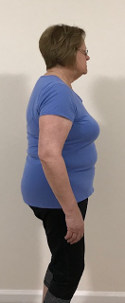
Flattened Spine
In this example, there is not enough curve in the spine.

Top of Pelvis Forward with Tailbone Back
Here, there is too much curve in the spine.
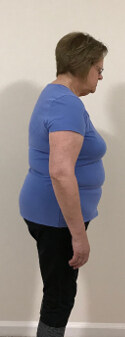
Head Forward
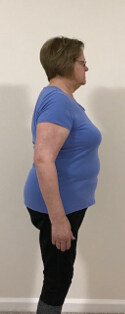
Standing Tall – Good Alignment!
This is the ideal posture to ensure you maintain good alignment.
Related Articles:
Beyond Calcium: The Power of Yoga for Bone Health
Discover how yoga supports bone health and osteoporosis prevention. Learn science-backed poses that strengthen your skeleton and reduce fracture risk.
The Motivation Paradox: Action is the Catalyst for Healing Back Pain
Discover the Motivation Paradox of Back Pain—why waiting for motivation keeps you stuck and how action is the true catalyst for healing. Learn science-backed strategies to break the pain cycle and reclaim mobility.
Transform Back Pain Anxiety: From Uncertainty to Empowerment
Discover how to navigate pain anxiety with empowerment. Embrace uncertainty and reclaim your healing journey through mindfulness and resilience.
Transforming Your Relationship with Back Pain: A Mindset Revolution
Back pain is more than a physical challenge—it's a profound psychological journey. The real battle isn't just in your muscles and joints, but in your mind. Your thoughts can either be a prison or a pathway to healing. Reframing Your Inner Narrative When chronic pain...
